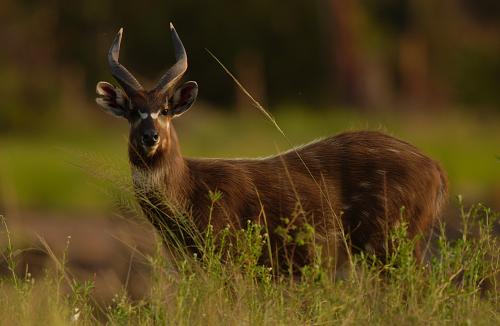Saving Species in Central Africa
The forests of central Africa—the Congo River basin and along the Gulf of Guinea—are some of the most important, and largest, wild ecosystems in the world. They are home to stunning numbers of diverse species and habitats. And while they have been subjected to deforestation and degradation, but some large areas remain intact.
How best to protect that area and to ensure the wellbeing of its human and non-human populations are thorny issues. However, the study and application of evolutionary biology can support conservation efforts and identify important research and education priorities.
To chart the best way forward, more than 20 researchers from 18 institutions spanning three continents met in 2011 in Gabon to collaborate and just published their polished conclusions in the journal Biotropica. Lisa Korte, Mireille Johnson, Hadrien Vanthomme, and Francisco Dallmeier, from the Smithsonian Conservation Biology Institute’s Center for Conservation Education and Sustainability, co-chaired different aspects of the meeting and contributed in synthesizing the priorities.
The scientists from North America, Europe, and Africa recommended increased research on species and habitats of conservation concern, more targeted research, monitoring and conservation strategies, and broader education outreach.
Specifically, they identified six urgent regional priorities:
- More research is needed to understand species and areas that haven’t been studied (especially remote and difficult-to-reach areas deep in the Congo basin).
- New genetic techniques should be used to help scientists understand how species and biodiversity have evolved. This research can then shed light on how populations may respond to future challenges, including climate change.
- Wide-ranging monitoring programs, using existing techniques, will help scientists understand the state of native populations, what threats they face, what invasive species may be present and causing changes to native ecosystems, and how human land use may be changing.
- More than just studying individual species, evolutionary biologists and ecologists need to take a high-level look at how communities of species and ecosystems work and respond to threats.
- Scientists need to focus on new and emerging diseases that may be present in the region now or in the future. Diagnosing these diseases and finding ways to prevent their spread, will help ensure the future biological integrity of the region.
- Regional universities and labs should be supported in training the next generation of scientists and conservation professionals.
Focusing on these priorities for research and education will help scientists, conservationists, managers, and stakeholders make strategic and sensible decisions as they work to save the species and the heart of one of the most valuable ecosystems on the planet.

